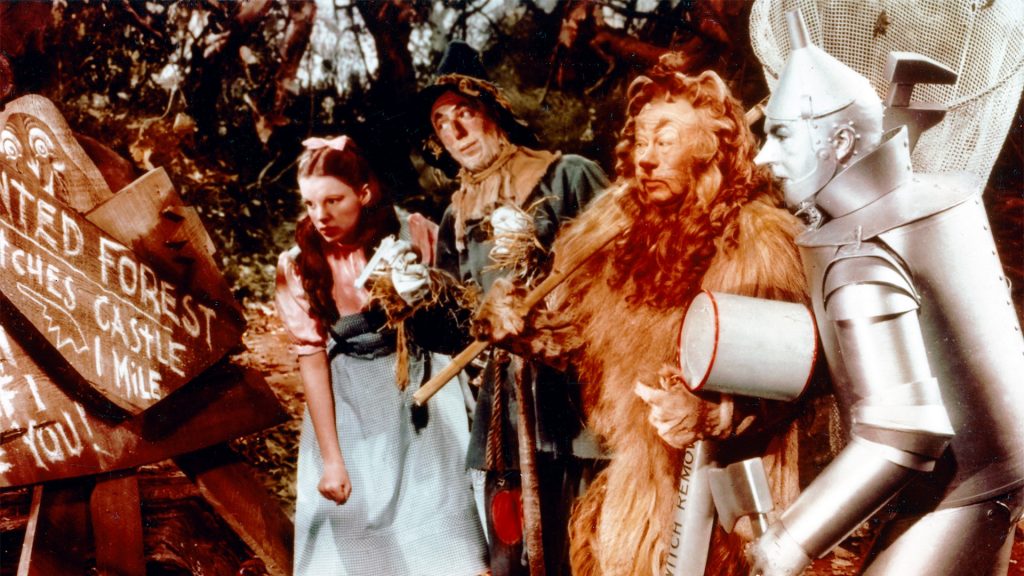‘The Wizard of Oz’ gets AI makeover for Las Vegas Sphere
Ella Greene April 9, 2025 0
- “The Wizard of Oz” is being reimagined using AI to debut at the Las Vegas Sphere, a 17,600-seat venue known for its massive LED display. Google’s Gemini AI has enhanced over 90% of the film, generating new visuals and digitally recreating characters to fit the Sphere’s wraparound screen.
- The project is a collaboration between Warner Bros., Google and the Sphere, with a premiere date set for August 28.
- While the use of AI in entertainment remains controversial, Sphere CEO Jim Dolan believes this ambitious remake will leave the industry stunned.
Full Story
This summer, “The Wizard of Oz” is heading to Las Vegas, reimagined for the digital age and projected on the world’s largest LED screen. After this, audiences may never look at Dorothy’s ruby slippers — or her little dog Toto — the same way again.
The 1939 cinematic classic is being transformed to fit the Sphere, the 17,600-seat venue renowned for its 160,000-square-foot wraparound display and immersive 4D experiences. Known for hosting iconic acts such as The Eagles, the Sphere will now offer a radically enhanced version of the American classic, powered in large part by artificial intelligence.
The project is a collaboration between Warner Bros., the Sphere and Google’s AI teams, with a debut slated for August 28. While the storyline remains unchanged, Google’s generative AI model, Gemini, has played a central role in enhancing resolution, expanding backgrounds, and digitally generating performances. The technology even allows characters who never shared a scene in the original to appear on screen together.
Google AI adds a new dimension
AI has touched more than 90% of the film. Producer Jane Rosenthal said the team considered various methods for adapting the film but concluded that artificial intelligence was the only viable tool for a transformation of this scale. To maintain creative integrity, Google’s AI team worked closely with professional filmmakers to guide choices around character actions, expressions and performances.
“It’s very, very big and very, very difficult,” Steven Hickson, director of AI foundation research at Google DeepMind, told The Wall Street Journal. “There are scenes where the Scarecrow’s nose is like 10 pixels. That’s a big technological challenge.”
Originally filmed in the 1930s using a 35mm camera with a 4:3 aspect ratio, “The Wizard of Oz” was never designed for the panoramic demands of the Sphere’s screen. Hickson offers an example of an early scene when Dorothy speaks with Aunt Em and Miss Gulch. In the original, Uncle Henry is present but off-camera. In the new version, he appears fully in frame, along with an expanded view of the farmhouse interior — an update made possible through AI.
Sphere CEO Jim Dolan, speaking at a recent preview, said he initially approached six companies about the project but ultimately partnered with Google, noting, “There was no other company that could do this.”
AI in entertainment remains controversial
But this AI-assisted approach isn’t without controversy. Across Hollywood, AI has become a flashpoint, with actors pushing for protections and studios facing backlash for using it in both new productions and remastered classics.
Oscar winner Adrien Brody recently drew criticism after it was revealed AI had been used to adjust his Hungarian accent in “The Brutalist.” A remastered version of “I Love Lucy” sparked backlash on Reddit after AI sharpened background characters that were originally meant to be out of focus. In “Alien: Romulus,” the use of AI to digitally resurrect the late actor Ian Holm stirred debate, while a 4K re-release of “Jaws 3-D” faced complaints over a “waxy,” unnatural appearance in upscaled background characters.
Despite the ongoing controversies, Dolan remains confident that the Sphere’s “Oz” version will be met with awe, not outrage.
“I can’t wait for the film and television industry to see what we’ve done, he said. “I think their jaws will drop.”
Related Stories
Ella Rae Greene, Editor In Chief
Ella Greene
Ella and the staff at Clear Media Project (CMP) curate these articles.
Unless otherwise noted CMP does not write these articles.
The views, thoughts, and opinions expressed in the articles published on this blog belong solely to the original authors and do not necessarily reflect the views of the blog owner. The blog owner does not claim ownership of the content shared by contributors and is not responsible for any inaccuracies, errors, or omissions.
All rights and credits goes to its rightful owners. No Copyright Infringement is intended. If you believe any content infringes on your rights, please contact us for review and potential removal.





